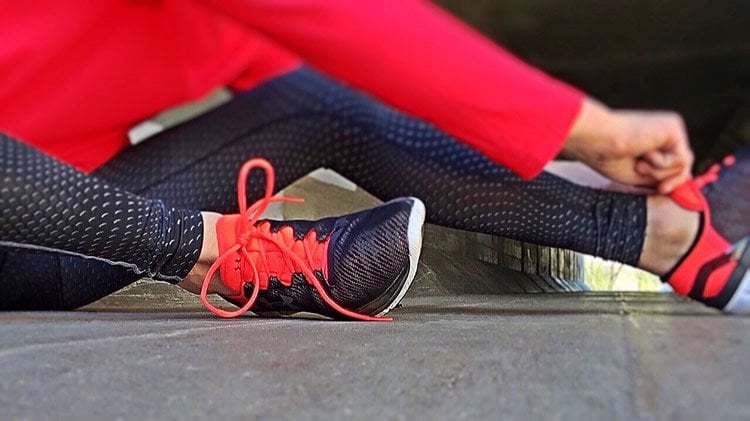Summary: A new study reports replacing 30 minutes of sitting down with physical activity, of any intensity or amount, can significantly reduce health risks and improve mortality.
Source: Columbia University.
A new study of around 8,000 middle-aged and older adults found that swapping a half-hour of sitting around with physical activity of any intensity or duration cut the risk of early death by as much as 35 percent. The findings highlight the importance of movement — regardless of its intensity or amount of time spent moving — for better health.
The study was published online in the American Journal of Epidemiology.
“Our findings underscore an important public health message that physical activity of any intensity provides health benefits,” says Keith Diaz, PhD, assistant professor of behavioral medicine at Columbia University Vagelos College of Physicians and Surgeons and lead author of the paper.
About one in four adults spends more than eight hours a day sitting, according to a recent study.
In a previous paper, Diaz and his team discovered that adults who sat for long stretches at a time — an hour or more without interruption — had a greater risk of early death than those who were sedentary for the same total amount of time but got up and moved around more often. They also found that people who sat for less than 30 minutes at a time had the lowest risk of early death, suggesting that taking movement breaks every half-hour could lower your risk of death.
But just how intense, and for how long, does the physical activity need to be to counter the ill effects of sitting?
The current study included 7,999 individuals, age 45 and older, who took part in a national investigation of racial and regional disparities in stroke between 2009 and 2013. The individuals wore activity monitors for at least four days to record the amount and intensity of physical activity they engaged in while awake. The researchers tabulated the death rate among participants through 2017. Using this data, they estimated how substituting time spent sitting with time being physically active would affect risk of early death.
The study found that replacing just 30 minutes of sitting with low-intensity physical activity would lower the risk of early death by 17 percent, a statistically significant decrease. Swapping the same amount of sitting for moderate to vigorous activity would be twice as effective, cutting the risk of early death by 35 percent. The researchers also found that short bursts of activity — of just a minute or two — provided a health benefit.

“If you have a job or lifestyle that involves a lot of sitting, you can lower your risk of early death by moving more often, for as long as you want and as your ability allows — whether that means taking an hour-long high-intensity spin class or choosing lower-intensity activities, like walking,” Diaz says.
While the study estimated the degree to which the risk of dying from any cause could be cut by swapping sitting for movement, it did not look at specific health-related outcomes.
“In our next study, we plan to look at the risk of specific cardiovascular outcomes, such as heart attack, heart failure, and cardiovascular-related deaths, associated with physical activity versus sedentary behavior,” Diaz says..
Funding: This research was supported by grants from the National Institute of Neurological Disorders and Stroke/National Institutes of Health (U01-NS041588 and R01-NS061846). Additional funding was provided by an unrestricted research grant from The Coca-Cola Company.
Source: Helen Garey – Columbia University
Publisher: Organized by NeuroscienceNews.com.
Image Source: NeuroscienceNews.com image is in the public domain.
Original Research: Abstract for “Potential Effects of Replacing Sedentary Time With Short Sedentary Bouts or Physical Activity on Mortality: A National Cohort Study ” by Keith M Diaz, Andrea T Duran, Natalie Colabianchi, Suzanne E Judd, Virginia J Howard, and Steven P Hooker in American Journal of Epidemiology. Published December 19 2018.
doi:10.1093/aje/kwy271
[cbtabs][cbtab title=”MLA”]Columbia University”Physical Activity of Any Type or Amount Cuts Health Risk From Sitting.” NeuroscienceNews. NeuroscienceNews, 14 January 2019.
<https://neurosciencenews.com/sitting-activity-health-10544/>.[/cbtab][cbtab title=”APA”]Columbia University(2019, January 14). Physical Activity of Any Type or Amount Cuts Health Risk From Sitting. NeuroscienceNews. Retrieved January 14, 2019 from https://neurosciencenews.com/sitting-activity-health-10544/[/cbtab][cbtab title=”Chicago”]Columbia University”Physical Activity of Any Type or Amount Cuts Health Risk From Sitting.” https://neurosciencenews.com/sitting-activity-health-10544/ (accessed January 14, 2019).[/cbtab][/cbtabs]
Abstract
Potential Effects of Replacing Sedentary Time With Short Sedentary Bouts or Physical Activity on Mortality: A National Cohort Study
Little is known concerning the type of activity that should be substituted for sedentary time and its potentially most hazardous form (prolonged sedentary bouts) to impart health benefit. We used isotemporal substitution techniques to examine whether 1) replacing total sedentary time with light- or moderate-intensity physical activity (LIPA, MVPA) and 2) replacing prolonged sedentary bouts with shorter sedentary bouts is associated with reductions in all-cause mortality risk. Participants (n = 7,999) from the REasons for Geographic and Racial Differences in Stroke (REGARDS) Study, a national cohort of US adults ≥45 years, were studied. Sedentary time was measured by accelerometry between 2009 and 2013. There was a beneficial association on mortality risk for replacing total sedentary time with both LIPA (per 30-minutes HR = 0.83; 95% CI: 0.80, 0.87) and MVPA (per 30-minutes HR = 0.65; 95% CI: 0.50, 0.85). Similarly, there was a beneficial association of replacing prolonged sedentary bout time with LIPA and MVPA, but not for replacement with shorter sedentary bouts (per 30-minutes HR = 1.00; 95% CI: 0.96, 1.03). These findings suggest short sedentary bouts still carry mortality risk and are not a healthful alternative to prolonged sedentary bouts. Instead, physical activity of any intensity is needed to mitigate the mortality risks incurred by sedentary time.






